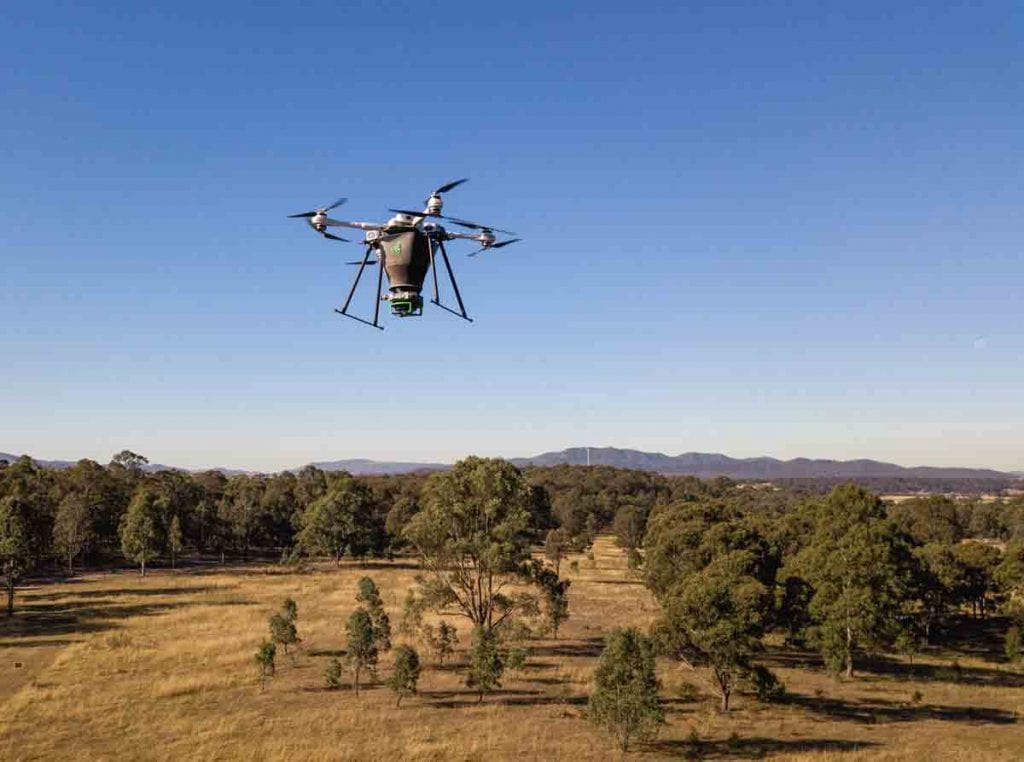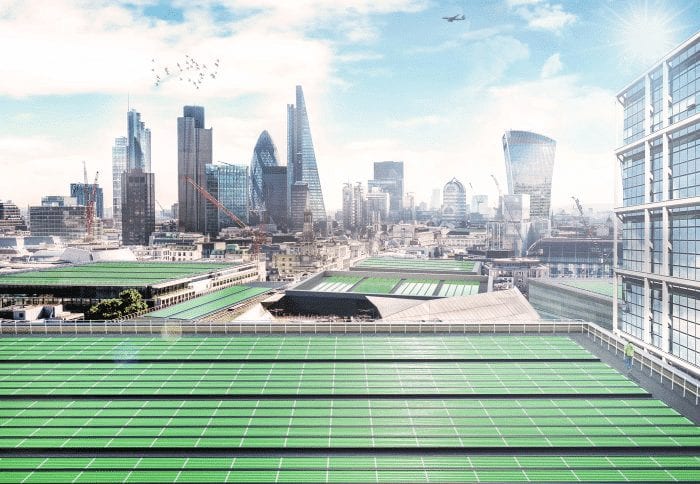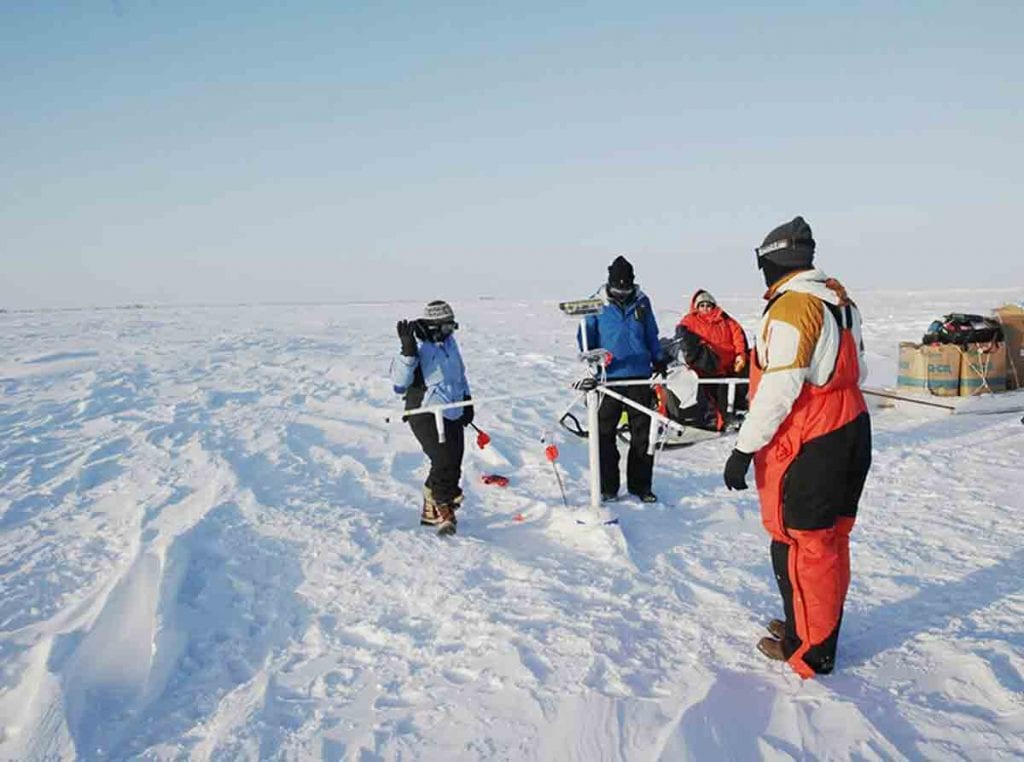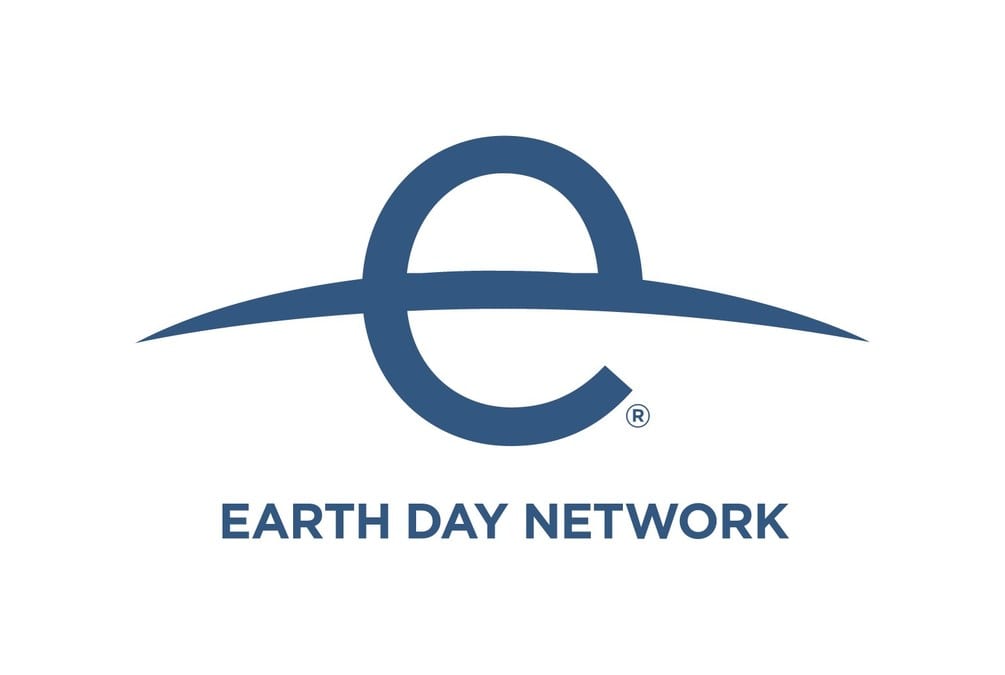World Earth Day is happening on April 22nd, to celebrate let’s take a trip around the globe in search of the most innovative eco-friendly projects taking place across the planet.
What’s Earth Day?
World Earth Day is not just a day, it’s one of the World’s largest environmental movements. The Earth Day Networks mission is to diversify, educate and activate the environmental movement worldwide. Growing out of the first Earth Day way back in 1970, Earth Day is now the world’s largest recruiter to the environmental movement, working with more than 75,000 partners in over 192 countries to drive positive action for our planet.
Our world needs transformational change. It’s time for the world to hold sectors accountable for their role in our environmental crisis while also calling for bold, creative, and innovative solutions. This will require action at all levels, from business and investment to city and national government.
Climate initiatives saving the World…
Here are 99 fabulous initiatives featuring climate conscious countries and companies that are working to reduce carbon emissions and counter the threat posed by climate change.
Some of the most unlikely ways to save the world include Spain generating electricity from Seville Oranges, roads made from solar panels in China and a UK based company using Artificial Intelligence to stop the decline of the Bee population.
Other standouts from research done by Boiler Guide include; a futuristic Saudi Arabian city powered entirely by green hydrogen, lab-grown diamonds from Belgium and, In India, authorities have created huge seaweed farms to absorb carbon dioxide and to provide a sustainable food source.

In Bogata, Columbia – the government has introduced car-free Sundays to encourage more bike use. While many of us love our meat, there’s no denying the negative impact it has on the environment. To counter this, Singapore has become the first country to pass lab-grown meat. And Ecuadorian farmers are planting living organisms like plants, fungi and microbes which will naturally break down pollutants, including crude oil.
Without further ado, here’s the list in full:
UK engineers from Biocarbon Engineering in Oxford have created tree-planting drones that can plant 1 billion trees per year.

Canada-based company, GHGSAT, have created satellites that pinpoint when and where greenhouse gas leaks so they can be plugged.
Australia is trying to save the Great Barrier Reef by attaching healthy coral to vulnerable areas.
Japan has discovered a plastic-eating enzyme that degrades plastic in days
China is developing solar panel roads, windows, and phone screens that are charged by falling raindrops.
Harvard scientists in the US are planning to release light reflecting particles into the atmosphere to block the sun’s radiation and slow global warming.
West Texas, US, is home to the world’s biggest carbon capture plant, capturing 8.4 million tonnes per annum.
Copenhagen, Denmark, leading coastal urban planning to reduce their carbon footprints, e.g., mini “pocket parks” absorb heat as the temperature rises.
San Francisco, US, has introduced laws making composting and recycling compulsory for all individuals and businesses.
Vancouver, Canada, has a zero waste policy.
Dubai in the United Arab Emirates has a zero waste policy.
New York, US, has a zero waste policy.
Bogata, Columbia, has over 300 kilometers of bicycle lanes, and introduced car-free Sundays.
Oslo, Norway, the first city in the world to tax carbon dioxide emissions.
Oslo, Norway, reducing car use by removing parking spaces.
Oslo, Norway, phasing out fossil-fuel heating in homes and offices.
Oslo, Norway, introducing buses powered by renewable energy
Norway has promised all of its short-haul flights will be on electric aircraft by 2040.
Singapore’s “Garden City,” buildings use less energy and water and is the cleanest city in Asia.
Singapore is the first country to approve sale of lab-grown meat.

UK-based company Arborea has developed bionic leaves that use sunlight to grow microscopic plants which grow in infertile ground and produce healthy food, while generating oxygen and reducing CO2.
UK-based the World Bee Project uses cloud technology, artificial intelligence (AI) and smart sensors to stop the decline of the Bee population.
Iceland 100% of its electricity and heat comes from renewable sources. 80% of the country’s electricity is generated by hydropower, while the geothermal fields provide up to 20% of the country’s electricity needs.
Morocco is home to the world’s largest concentrated solar facility.
A South African winery is planting one million cuttings of spekboom over the next five years which will grow to 5m tall.
Rue de Beaubourg building, Paris, has been drawing its warmth from the hustle and bustle of human body heat in a nearby metro station since 2015.
Sweden captures human body heat in its busy Stockholm Central station to warm a nearby 17-storey building named Kungsbrohuset.
New Zealand company ByFusion converts plastic rubbish into a range of sustainable building materials.
France is introducing “repairability” ratings for everyday appliances to tackle ‘throwaway culture’.
The five coastal states on the Gulf of Mexico – Alabama, Florida, Louisiana, Mississippi and Texas – have converted more than 500 oil and gas platforms into artificial coral reefs.
The International Monetary Fund (IMF) is incentivising carbon emitting companies to help protect whales.
Democratic Republic of the Congo the villagers of Nkala have been given ownership of 16 square miles of forest which has slowed the decline of the Congo Basin rainforest.
California, US, Moss Landing Power Plant was a natural gas-fired generator but is being converted to the world’s largest battery, storing excess solar and wind energy.
India is cultivating seaweed farms both as a sustainable food source and because it absorbs carbon dioxide.

Canada and the US, the Arctic Ice Project scatters brightly reflective beads (each one thinner than a human hair) which float on water, reflect away sunlight and slow the melting of Arctic ice.
Russia is removing submarines and four reactor compartments from the Arctic ocean, reducing the ocean’s radioactive material by 90%.
Spain has launched a scheme to generate electricity from oranges.
California, US is removing four hydroelectric dams on the lower Klamath River to restore 400 stream-miles of habitat for salmon and other migratory species.
Germany is aiming to return 2% of its surface area of Germany to wilderness
Ireland is abandoning its use of carbon-emitting peat as a fuel source after 70 years.
The European Space Agency is researching space-based solar power stations that orbit the Sun to absorb and reflect the sun’s light and produce clean energy.
Aberdeen, Scotland, has welcomed the world’s first hydrogen-powered double decker bus.
Japan has the world’s largest facility for green hydrogen production from renewables in Fukushima, not far from the site of the 2011 nuclear disaster.
Saudi Arabia will build a futuristic city called Neom in the desert by the Red Sea for a million people solely powered by green hydrogen.
Australia is planning to power individual homes using solar energy to generate and store green hydrogen which can be converted back into electricity.
A Japan-based company has designed a wind turbine engineered to operate in typhoon-prone areas where reliable electricity is scarce.
Rwanda’s River Kivu is being slowly pulled apart by tectonic forces, thinning the Earth’s crust, triggering volcanic activity, and reating hot springs below Kivu that feed hot water, carbon dioxide and methane into the lake. Methane, the same gas that could fuel a deadly natural disaster, is being taken from the lake to be burned as fuel and exported as bottled methane.
A Nepal power plant is generating electricity from fallen forest pine needles.
India’s Gujarat region is covering its canals with solar panels to save land, water and carbon emissions.
The Philippines has designed a low-carbon boat partly powered by waves rather than fossil fuels to transport people and goods across its more than 7,000 islands.
Denmark is aiming to pass a law to make it illegal for any of its governments to fail to tackle climate change.
Taiwan, once nicknamed “garbage island” as 90% of the waste collected was heading straight into landfills, passed the Waste Disposal Act in 1998 and an Extended Producer Responsibility scheme. Taiwan’s recycling rate is now one of the best in the world.
North Africa: 1000s of acres of acacia trees are being planted to stop the spread of the Sahara desert.
Mexico is using waste products from Nopal cacti as a new biofuel.
Delhi, India, is gradually introducing the electric three wheeler or rickshaw. Already there are thought to be more than 1.5 million on the streets in India.
Antwerp, Belgium, and the global diamond industry are investing in laboratory grown diamonds. It is estimated that 57kg of carbon is released into the atmosphere for every single carat mined from the earth. A lab-grown diamond is chemically, physically and optically identical to a mined diamond.
Ecuadorian farmers are planting living organisms like plants, fungi and microbes which will naturally break down pollutants, including crude oil.
The UK government is encouraging the installation of renewable heating with financial incentive schemes including the Renewable Heat Incentive and Clean Heat Grants.
Vegan World Alliance – Four countries have united to form the Vegan World Alliance (VWA) which aims to promote vegan values on a global scale.
14 governments responsible for 40% of the world’s coastlines have pledged to end overfishing and stop the flow of plastic pollution into the seas in the next 10 years. Australia, Canada, Chile, Fiji, Ghana, Indonesia, Jamaica, Japan, Kenya, Mexico, Namibia, Norway, Palau and Portugal.
Brazil: Over half of the Brazilian Amazon is now designated as national parks or indigenous lands
Brazil: To save the Amazon Rainforest, many industries and global companies are refusing to source cattle from ranches within 10km of deforestation fronts.
Brazil’s Space Agency has launched a satellite which monitors changes in forest cover in real time, producing a report of deforestation hotspots for law enforcement every two weeks
Brazil’s government issues high profile fines for people violating its deforestation laws by patrolling roads leading into the rainforest.
Costa Rica’s Kids Saving the Rainforest nonprofit corporation works to protect the diverse wildlife of the Pacific Coast by rehabilitating wildlife, conducting original scientific research, training volunteers, and promoting conservation and reforestation.
China’s rural communities have been given nearly 400 beehives as well as training on beekeeping. This helps families generate their own income so they no longer have to hunt tigers.
The North American Sioux Tribe, with investment from WWF has provided a new home for bison in the Northern Great Plains.
Indonesia, Sumatran Forest, ABT works with local communities to conserve the forest and protect wildlife, while also working to generate revenue and income to support community livelihoods.
Google Wildlife Insights – Launched in December 2019 by Google and several conservation partners uses the power of big data to unite millions of photos from camera trap projects to reveal how wildlife and endangered species are faring in real time all over the world.
Kenya and Zambia: Technology including GPS tracking collars, camera traps, drone technology, and FLIR thermal cameras help to amplify the visibility of threatened species and measure the health of their populations.
In Kenya solar-powered lights are helping livestock to stay safe from lions, which also prevents farmers from killing lions in retaliation.
Bhutan is the only country in the world to commit to remaining carbon neutral. Communities are trained in sustainable and climate-resilient nature-based enterprises, responsible forest management, and communities are given solar panels and biogas stoves as alternatives to burning wood for heating and cooking.
Gulf of California, US, fishermen and scientists are working to retrieve ghost nets from the ocean to protect the habitat of the world’s smallest porpoise.
Nepal’s USAID-funded Hariyo Ban program prevents animal-human conflict by enabling farmers to install fencing to protect their families and crops from wild animals and provides compensation funds when damage occurs.
UK Kent Wildlife Trust and Wildwood Trust are introducing bison to a British woodland.
The Future Forest Company buys degraded land to plant forests and utilise carbon sequestration technologies, biochar and enhanced weathering to remove as much carbon from the atmosphere as possible. They have pledged to plant 50 million trees by 2025.
Italy is home to Nemo’s Garden, an experimental underwater farm where plants grow without soil or pesticides.
Freshkills Park, Staten Island, US was the largest landfill in the world before closing in 2001. Since then, the landscape has been engineered with layers of soil and infrastructure, and the area has become a place for wildlife, recreation, science, education, and art.
System 001 is a 62-mile long barrier that targets plastic debris, micro plastics and ghost nets from the gyres, also known as the Great Pacific Garbage Patch. Created by Boyan Slat, CEO of The Ocean Cleanup, this innovative design cleans up 80,000 tons of rubbish between Hawaii and California.
Canada has built eco-passages under roads so that wild animals do not have to cross the roads.
Germany’s eco tax is applied not only to gasoline and diesel for vehicles, but to heating oil and fossil fuels used to generate electricity.
Germany will have closed all of its nuclear power plants by 2022 and replaced production with renewables, gas turbines, and conservation areas.
Zimbabwe’s Reduced Emissions from Deforestation and Degradation (REDD+) project is helping homes adopt conservation-farming practices such as mulching, composting, and crop rotation.
India has replaced woodfired cooking with manure-fed biogas digesters in rural communities in the states of Bihar, Jharkhand, Madhya Pradesh, and Uttarakhand.
China is providing free solar-powered stoves to rural communities near the Nanyang Danjiang river.
Kenya’s Kasigau Corridor suffers heavily from deforestation, hardship, and drought. Unsustainable agriculture practices and livelihoods are being replaced by reforestation projects, conservation management, and biodiversity monitoring.
Laos’s Pakkading District project is developing sustainable agroforestry to restore nearly 970 hectares (almost 3,000 acres) of land degraded by years of slash-and-burn farming practices.
Panama’s reforestation project has seen 7.5 million diverse trees planted as well as a more sustainable management system to lands in Panama as well as the fair and sustainable production of cacao and timber.
Rwanda’s borehole project provides rural communities with access to clean well water, eliminating the need to purify drinking water through boiling on wood-fueled fires.
Thailand’s Chol Charoen factory in Cholburi Province now captures methane, a potent greenhouse gas normally released from the plant’s wastewater, and converts it into energy to power the plant.
Turkey is now capturing natural gas that is produced through the decomposition of organic material at a landfill on Turkey’s northern coast. Before the project, methane and carbon dioxide escaped freely into the atmosphere.
Scotland has installed a large-scale water source heat pump in its River Clyde to power a District Heating Network to heat offices, businesses, and homes using natural heat from the river.
Switzerland has two agricultural biogas plants which produce power and heat while preventing methane emissions.
Norway’s Longship project captures and stores carbon dioxide at sea.
Denmark is building an energy island of 200 wind turbines in the North Sea which will provide enough energy for three million households.
Spain has stopped issuing new licences for oil and gas exploration, has closed most of its coal mines, and is running down its nuclear energy program; many workers are being re-trained in clean energy jobs, and environmental restoration.
Spain’s government has committed to installing at least 3,000 megawatts of wind and solar power capacity every year over ten years.
Italy has made climate change and sustainable development compulsory education in school.
US has now returned to the Paris Climate Agreement with President Biden after Donald Trump made the US the only country in the world to refuse to participate.
“It’s fantastic to see the many weird and wonderful projects taking place across the planet, all which have the potential to make a positive difference.”
– David Holmes, Founder of Boiler Guide
The threat of climate change can be exhausting and stressful. Climate anxiety is most certainly a real thing. Let’s take a moment to celebrate all the wonderful work being done to reverse climate change this Earth Day and beyond. It’s easy to overlook the amazing innovations that are happening across the globe as we all strive for a better future. Earth Day is a great opportunity to touch base and refresh your outlook, be sure to check out the Earth Day website for free events, webinars and other Earth Day Network activities to take part in.
Happy Earth Day 2021!





